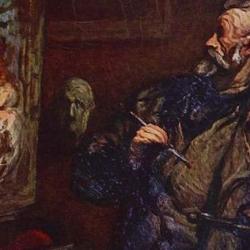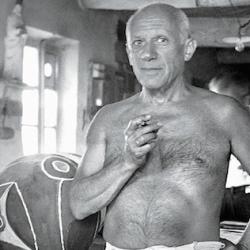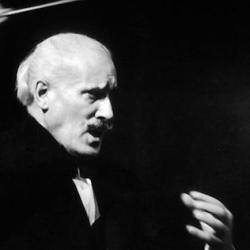Modernism was born in Vienna at the turning point from the 19th to the 20th century. On most accounts, the climate of fin de siecle Vienna was dark and brooding breeding ground for modernist nightmares. Without denying that dimension of Viennese modernism, Kevin Karnes argues in A Kingdom Not of this World that a contrary strain of utopian optimism was equally at work. His subtitle says it all: “Wagner, the Arts, & Utopian Visions in Fin-de-Siecle Vienna.”
Mein Reich ist nicht von dieser Welt: Karnes takes his title from a poem by Fritz Stern, written to celebrate the unveiling of Max Klinger’s statue of Beethoven in 1989. Klinger’s sculpture inspired Stern to “fathom and recreate poetically the immense ideal kingdom [Ideenreich] your works reveal to us” (8). Gustav Klimt used the same line from John’s gospel to title the third panel of his Beethoven Frieze (1902), which depicted, in Karnes’s description, “a heavenly abode” that could be attained by “overcoming an army of ‘hostile forces’ lurking within the psyche” (9).
Behind these utopian artistic visions lay Wagner, both his music and his theorizing about art. In an essay on Beethoven, Wagner had written, “Just as Christianity stepped out from under the universal civilization of the Romans, so does music now break forth from amidst the chaos of modern civilization. Both say to us: Our kingdom is not of this world. Which means: We come from within, you from without; we spring from the essence of things, you from the appearance” (10). Art offers a path of redemption from dead civilization.
Karnes traces Wagner’s direct and indirect impact on various Viennese artists and musicians, ending with Mahler. Mythology was near the heart of the project: “For Wagner, Nietzsche, and Schopenhauer alike, myths reveal the Idea of man. They are essential, timeless expressions of human nature” (120). Sex is also an essential component; for Schopenhauer it is the “purest manifestation of will in human life” (121) and for Freud the wellspring of human action.
Karnes’s explanation of the role of the Typhon figure (an ape) in Klimt’s Beethoven Frieze provides a good example of how this worked out in a particular painting. He describes this as “the most deeply Wagnerian-Schopenhauerian image in the work”: “For the ancient Greeks, Typhon was the god of wind and storm, an embodiment of the elemental forces of sky and sea. He was winged and typically depicted with serpents’ tails in place of legs, sometimes with a human head (or heads) and face. In Schopenhauerian terms, Typhon was an embodiment of raw power, of unmediated will. As the philosopher emphasized, however, on need not look to the heavens or the seas to observe the effects of such elemental will, for the animal kingdom provides us with innumerable examples in whichever direction we look. . . . Schopenhauer paints us as tigers and wolves. Wagner portrays us as driven by vicious madness. Klimt, perhaps with a nod to Darwin, depicts our inner nature in the guise of an ape. . . . The irrational, animalistic, Typonic willing lurks within each and every one of us and others as well through its ceaseless exertions, the most hostile forces” (120).
There’s all the fin-de-siecle darkness you might want, but Karnes takes the painting as a depiction of the overcoming of these psychic forces. These forces can never actually be defeated, which means that Klimt’s vision is literally u-topian: “Klint’s depiction of a peaceable psychic realm, attained through transcendence of will itself, can only be regarded as utopian. It records a vision of wish fulfillment that cannot ever become a reality. Unfolding a vista, as its program promised, of an ‘ideal realm in which alone we find true joy, true happiness, true love.’ Klimt’s painting gives us a beautiful, intoxicating glimpse of a kingdom literally not of this world” (121).
What Karnes describes might be captured by the notion of tragedy: Dark violence threatens everywhere at all times; we dream of harmony that never comes; our dreams ennoble us, and yet at the same time they are bound to frustrate us.















